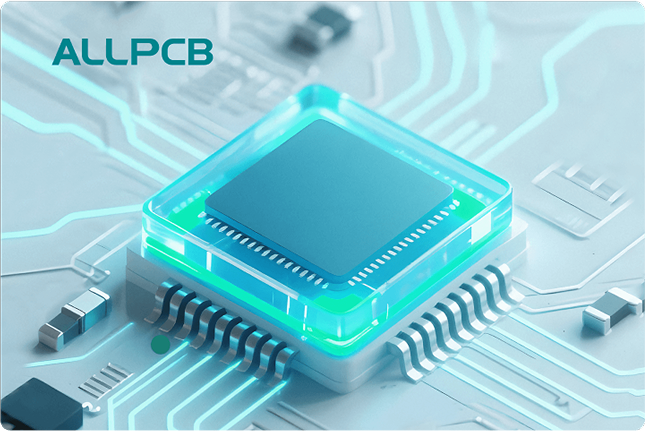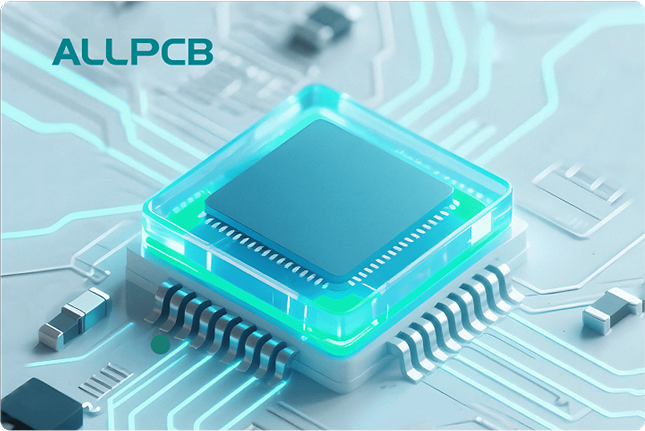For PCB designers, understanding a diode datasheet is critical to selecting the right component for a circuit. Whether you're working on power supplies, signal processing, or protection circuits, knowing how to interpret diode specifications can make or break your design. This guide will break down the essentials of diode datasheet interpretation, explain key diode parameters, and provide actionable insights for diode specifications for PCB design. From voltage and current ratings to thermal resistance and capacitance, we’ll cover everything you need to know to make informed decisions.
In the sections below, we’ll dive deep into each parameter, using practical examples and data to help you navigate datasheets with confidence. Let’s get started on this journey to mastering understanding diode parameters for better PCB designs.
Why Diode Datasheets Matter in PCB Design
Diodes are fundamental components in almost every electronic circuit, serving purposes like rectification, voltage regulation, and signal protection. However, not all diodes are created equal. A datasheet is your roadmap to understanding a diode’s capabilities and limitations. Misinterpreting or overlooking key specs can lead to circuit failure, overheating, or inefficient performance. For PCB designers, mastering diode datasheet interpretation ensures that you pick the right diode for your specific application, whether it’s a simple rectifier or a high-speed switching circuit.
Key Diode Parameters: Breaking Down the Basics
Every diode datasheet is packed with technical details, but some parameters are more critical than others for PCB design. Below, we’ll explore the most important specs, including diode voltage ratings, diode current ratings, and other factors like reverse recovery time and thermal resistance. Let’s decode each one step by step.
1. Diode Voltage Ratings: Ensuring Safe Operation
One of the first specs to check on a diode datasheet is the voltage rating, often listed as the Peak Reverse Voltage (VRRM) or Maximum Reverse Voltage. This tells you the maximum voltage the diode can withstand in the reverse direction without breaking down. For example, if your circuit operates at 50V, you should choose a diode with a VRRM of at least 60V to 100V to provide a safety margin.
Another related spec is the Forward Voltage Drop (VF), which indicates the voltage required for the diode to conduct in the forward direction. For a standard silicon diode, VF is typically around 0.7V, while Schottky diodes might have a lower VF of 0.3V. Selecting a diode with an appropriate VF is crucial for minimizing power loss in your design.
2. Diode Current Ratings: Handling Power Demands
Current ratings are just as important as voltage when it comes to diode current ratings. The Maximum Forward Current (IF) specifies the highest current the diode can handle continuously without overheating. For instance, a diode rated for 1A can safely conduct up to 1 ampere under normal conditions. However, exceeding this limit can cause thermal runaway and component failure.
Additionally, look for the Surge Current Rating, which indicates the maximum short-term current the diode can handle, such as during startup transients in power supplies. A diode might handle a surge of 30A for a few milliseconds even if its continuous rating is only 1A. Always consider both ratings to ensure reliability in dynamic conditions.
3. Diode Reverse Recovery Time: Speed Matters
For applications involving switching, such as in switch-mode power supplies, diode reverse recovery time is a critical parameter. This spec, often denoted as trr, measures the time it takes for a diode to stop conducting when the voltage switches from forward to reverse. A slow recovery time can lead to power loss and inefficiency. For high-frequency circuits operating at 100kHz or above, fast-recovery or Schottky diodes with a trr of less than 50ns are often preferred over standard diodes with recovery times of 1-2μs.
4. Diode Thermal Resistance: Managing Heat
Heat dissipation is a major concern in PCB design, and diode thermal resistance plays a big role in how a diode handles temperature. Thermal resistance, often listed as RθJA (junction-to-ambient) or RθJC (junction-to-case), is measured in °C/W and indicates how much the diode’s temperature rises per watt of power dissipated. For example, a diode with an RθJA of 50°C/W will increase in temperature by 50°C for every watt of power it dissipates if no heatsink is used.
To prevent overheating, ensure your PCB layout includes proper thermal management, such as copper pads or vias for heat dissipation. Always check the maximum junction temperature (often 125°C or 150°C) and derate the diode’s current or power ratings if operating in high-temperature environments.
5. Diode Capacitance: Impact on High-Frequency Circuits
In high-frequency applications, diode capacitance can affect circuit performance. This parameter, often listed as Cj (junction capacitance), represents the parasitic capacitance between the diode’s terminals. High capacitance can cause unwanted signal distortion or slow switching speeds. For instance, a diode with a Cj of 10pF might be suitable for low-frequency circuits but problematic at 1MHz or higher. When designing RF or high-speed digital circuits, opt for diodes with low capacitance values, typically below 5pF.
6. Diode Leakage Current: Preventing Unwanted Power Loss
Diode leakage current refers to the small current that flows through the diode when it’s reverse-biased and supposed to be off. This spec, denoted as IR (reverse current), is usually in the microampere (μA) or nanoampere (nA) range. For example, a diode might have an IR of 5μA at 25°C, but this value often increases with temperature. Excessive leakage can drain batteries in low-power designs or cause errors in precision circuits. Always choose a diode with low leakage for applications where power efficiency is critical.
Practical Tips for Diode Selection in PCB Design
Now that we’ve covered the key parameters in diode specifications for PCB design, let’s look at some practical tips to apply this knowledge effectively.
Match Diode Specs to Circuit Requirements
Always start by defining your circuit’s needs. For a power supply circuit, prioritize high diode voltage ratings and diode current ratings to handle the load. For a high-speed data line, focus on low diode capacitance and fast diode reverse recovery time. Create a checklist of must-have specs before browsing datasheets to narrow down your options.
Consider Operating Conditions
Environmental factors like temperature and humidity can impact diode performance. Check the datasheet for derating curves, which show how current or power ratings decrease at higher temperatures. For example, a diode rated for 1A at 25°C might only handle 0.7A at 85°C. Factor in these conditions to avoid premature failure.
Use Simulation Tools for Validation
Before finalizing your design, use simulation software to test how the diode behaves in your circuit. Input parameters like forward voltage, reverse recovery time, and thermal resistance to predict performance under real-world conditions. This step can save time and prevent costly redesigns.
Pay Attention to Package and Mounting
The physical package of a diode (e.g., through-hole or surface-mount) affects both thermal management and PCB layout. Surface-mount diodes are common in compact designs but may have higher diode thermal resistance due to smaller heat dissipation areas. Ensure your PCB has adequate space for heat sinking if needed, and double-check the footprint dimensions in the datasheet.
Common Mistakes to Avoid When Interpreting Diode Datasheets
Even experienced designers can make errors when navigating datasheets. Here are some pitfalls to watch out for during diode datasheet interpretation.
Ignoring Derating Factors
Many designers overlook derating information, assuming the maximum ratings apply under all conditions. Always apply a safety margin (e.g., 20-30% below the maximum rating) and consult derating curves for temperature and other factors.
Misunderstanding Test Conditions
Datasheet values are often based on specific test conditions, such as a particular temperature or load. For instance, a leakage current of 1μA might be measured at 25°C, but it could be much higher at 85°C. Read the fine print to understand how specs apply to your design environment.
Overlooking Dynamic Parameters
In high-frequency designs, static parameters like voltage and current ratings aren’t enough. Neglecting dynamic specs like diode reverse recovery time or diode capacitance can lead to signal distortion or inefficiency. Always consider the full range of parameters relevant to your application.
How to Read a Diode Datasheet: Step-by-Step Process
To wrap up our guide on understanding diode parameters, let’s walk through a simple process for reading a datasheet effectively.
- Identify the Diode Type: Check if it’s a rectifier, Schottky, Zener, or another type to understand its primary function.
- Check Key Ratings: Look at diode voltage ratings (VRRM, VF) and diode current ratings (IF, surge current) to ensure compatibility with your circuit.
- Evaluate Dynamic Specs: For switching applications, note the diode reverse recovery time and diode capacitance.
- Assess Thermal Data: Review diode thermal resistance and maximum junction temperature to plan for heat management.
- Analyze Leakage: Confirm the diode leakage current is low enough for your power efficiency needs.
- Verify Package Details: Ensure the diode’s physical size and mounting style fit your PCB layout.
Following these steps will help you extract the most relevant information from any datasheet, saving time and reducing design errors.
Conclusion: Master Diode Datasheets for Better PCB Designs
Decoding a diode datasheet doesn’t have to be intimidating. By focusing on critical parameters like diode voltage ratings, diode current ratings, diode reverse recovery time, diode thermal resistance, diode capacitance, and diode leakage current, you can confidently select the right component for your PCB design. Remember to consider your circuit’s specific needs, account for operating conditions, and avoid common mistakes like ignoring derating factors.
With this comprehensive guide, you’re equipped to tackle diode datasheet interpretation and apply diode specifications for PCB design effectively. Keep this resource handy as a reference for your next project, and watch your designs become more reliable and efficient. Let’s build better circuits, one diode at a time.
 ALLPCB
ALLPCB







